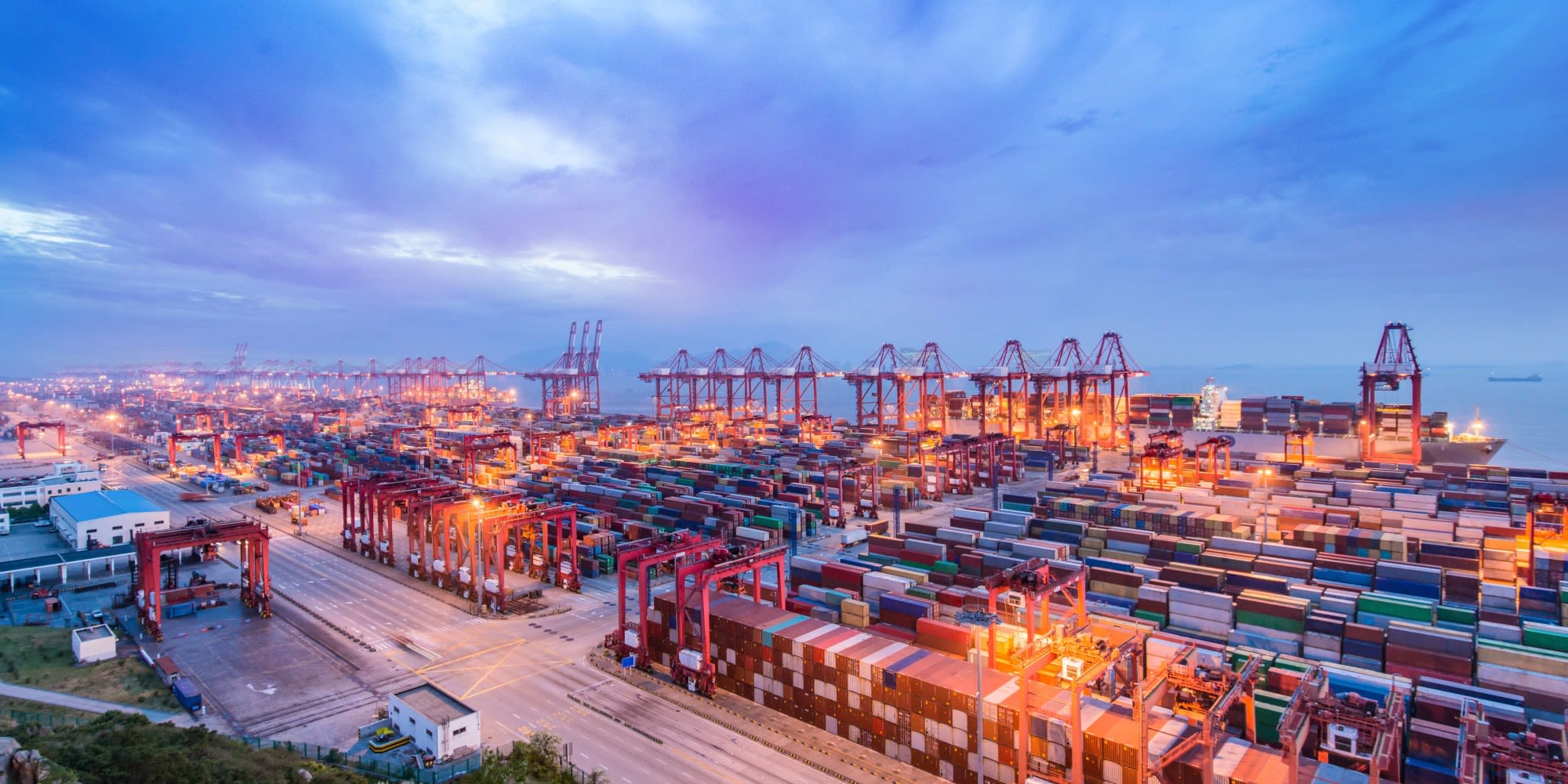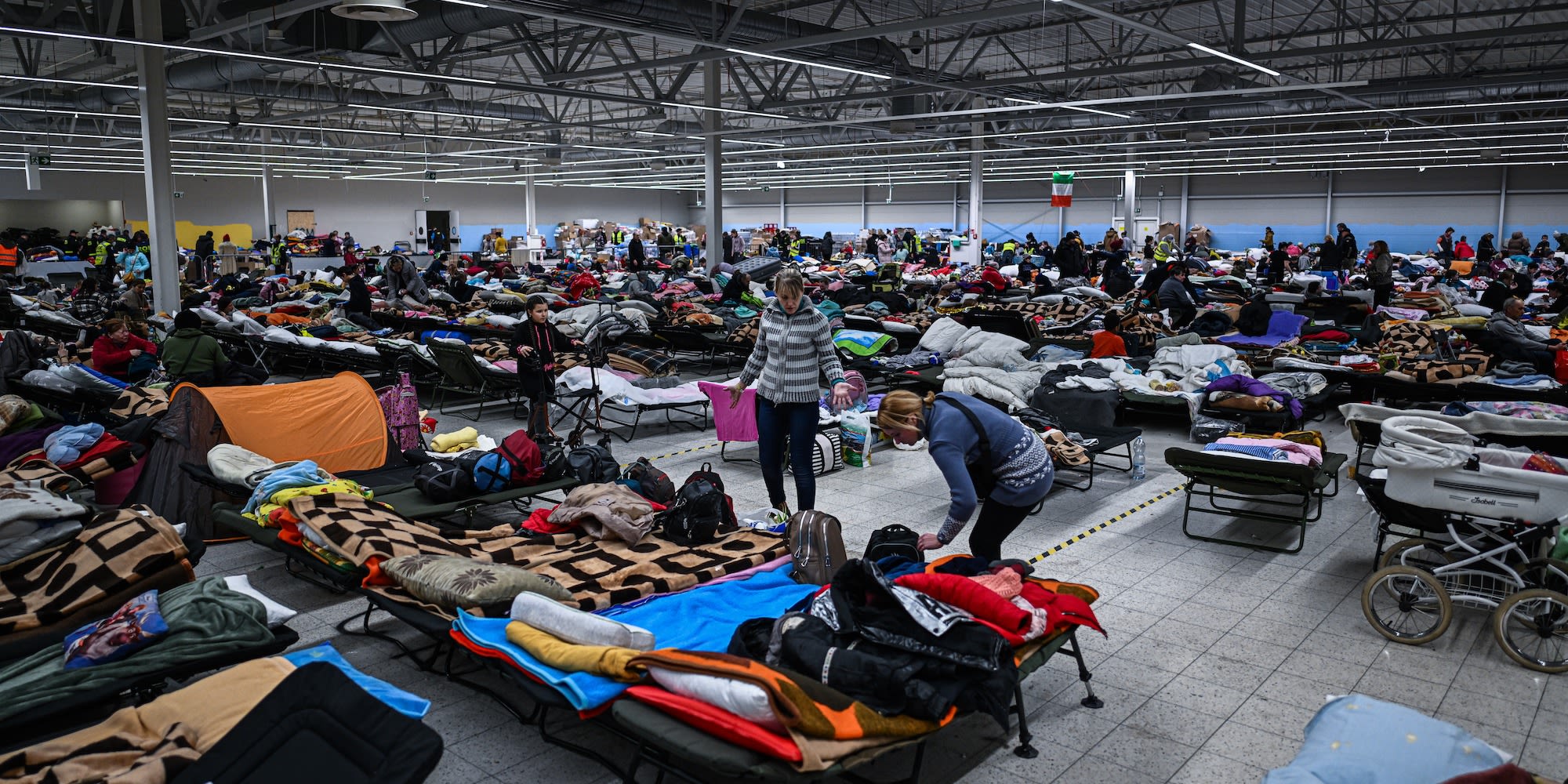
March 28, 2022
UPDATE - New Covid Lockdowns in China Impact Global Supply Chains
Tags:
UPDATE - New Covid Lockdowns in China Impact Global Supply Chains

(Note: The situation is still very fluid, and we’ll continue to monitor and update this blog as further information becomes available.)
Latest UPDATE - April 6
Chinese authorities have extended the lockdown across Shanghai without releasing a new tentitive end date. This indefinite extension means that impact on the global supply chain will begin mounting as logistics providers are having a harder time getting trucks in and out of the major port city.
Currently, most of the city of Shanghai is in full lockdown, with residents unable to leave their homes to do even the daily basics of acquiring food. The situation is a bit different at the port itself, where the Shanghai International Port Group (SIPG), the entity charged with running the port, has continued a 24/7 operation schedule. This is being accomplished with what's called a closed-loop solution where workers are sleeping and taking meals onsite when not on shift.
This developing situation has put the brakes on what was seen as the beginning of the global supply chain recovery from the past two years of pandemic conditions. We will continue updating this page as the situation develops.
Update - MARCH 28
Shanghai Lockdown
A new wave of asymptomatic infections has lead the Chinese government to announce a lockdown of the country's financial hub, Shanghai that's also the country's most populous city. The city will be divided into two for this round of testing, with the first half being locked down and tested between March 28 - April 1 and the second half between April 1 - April 5.
After announcing the two-phase lockdown of Shanghai on Sunday, the government reported 3,500 new COVID cases. On Monday, barricades were seen splitting up the city, while many metro services and bus lines were suspended. Companies including Tesla Inc. suspended manufacturing for four days.
This lockdown comes close on the heels of recent lockdowns in Shenzhen and Dongguan—two of China’s largest manufacturing hubs. This could be yet another potential setback for exports from China, in light of disruptions triggered by previous COIVID-related shutdowns and the war in Ukraine. Industry analyst predict that while this could send demand and spot rates down in the short term, it could create upward pressure later.
Shanghai has been battling the most recent surge in cases for nearly a month now, with the number of cases reaching their highest since the initial wave slowed in 2020. Public transportation, including ride-sharing services, are suspended as well as all office and factory work that cannot be conducted remotely. Shanghai Stock Market officials have said they will work to maintain operations, though exactly what that will look like is not yet clear.
Update - MARCH 21
The overall lockdowns are being lifted as of today as per the original plan. The good news is, many operations are returning to normal with limited residual effects still being monitored.
Shenzhen: After completing three rounds of mass nucleic acid testing, most districts in the city have resumed normal operation starting from March 21. Public transportation and subways have all reopened, and citizens can enter and exit freely with “48-hour negative” testing results. Office and factories are allowed to restart activities as of today, with Dongguan expected to resume operations as well.
Dongguan: No official notice on lifting the lockdown has been given yet, however it is likely that same approach as in Shenzhen will be taken soon.
Shanghai: The government requests that citizens get a negative Covid test report within 5 days before they go back to work today. The majority of factories are operating as usual with only a few currently shut down due to confirmed Covid cases. Specifics differ from district to district and factories might face two-day closure when requested by their district authority to do mandatory nucleic acid tests. Check back for further updates.
All terminals and ports report being back to normal operations, with a few lingering slowdowns due to the overall situation and frequent required nucleic acid testing.
Update - March 15
On Sunday March 13, city authorities of Shenzhen and Dongguan—two of China’s largest manufacturing hubs—announced a general lockdown from March 14-20 in response to a nationwide surge in Covid outbreaks. Dongguan has now extended lockdowns to March 21. Overall, there hasn't been a huge impact yet to airlines and terminal operations as well as air capacity.
Shenzhen Update:
According to a notice issued by the Shenzhen Covid-19 Prevention and Control Command Office, the city’s 17+ million residents must stay home till Sunday, March 20, unless they’re stepping out for three rounds of COVID testing. This lockdown includes:
- Closure of public transportation (bus and subway)
- Office employees asked to work from home (except for essential services)
- Residents prohibited from leaving these cities
- The communities, urban villages, and industrial parks will implement closed management.
- Multiple rounds of Covid testing will be conducted on the general public.
- The cross-border freight connection between Shenzhen and Hong Kong at Liantang port is suspended from March 15.
Shanghai Update:
Shanghai is also under similar restrictions starting from March 15 as COVID-19 cases surge. Data released on March 15 showed that Shanghai recorded 240+ new Covid infections on March 14 (symptomatic and asymptomatic).
- Multiple buildings and compounds have been closed throughout the city.
- District, sub-district, and neighborhood level governments have issued various restrictions on residents and requirements include a negative NAT test within 24-48 hours. Testing times continue to be slow with long lines at many testing centers.
- Schools are closed and some neighborhoods have entered lockdown and conducted mass testing.
- Some factories are closed for 2 days at least. The highway system into Shanghai is severely impacted by regulations in nearby provinces and daily trucker policy changes.
Additionally, there are plans under discussion to divert passenger flights headed to Shanghai to other cities. There are currently no restrictions on cargo flights, however, the diversion of passenger flights will impact air freight rates.
Yangtze River Delta Update
Souzhou:
Suzhou announced several measures yesterday to restrict movement in and out of the city. According to the announcement:
- All inter-provincial, city and county shuttle and charter buses, inter-city taxi services and related bus service are suspended.
- All travelers returning to Suzhou must have a negative NAT test taken within 48 hours and take another test within 12 hours. There are also varying quarantine restrictions now in place based on the areas’ risk levels. For more information see this link.
- Railway passengers must have had a Negative NAT test within the previous 48 hours and provide a green health code.
- As of March 14, Suzhou had closed 55 roads and set up 45 inspection points where passengers and drivers must show their green code and show a negative NAT test taken in the previous 48 hours.
- For trucks and other vehicles carrying factory goods, emergency equipment or consumer goods, Suzhou has set up 17 logistics channels. Drivers can obtain vehicle passes from the Suzhou Municipal Transportation Bureau’s website.
General Impact on Global Supply Chains
Shenzhen and Hong Kong are critical container shipping hubs for global supply chains. As shown in our recent Ocean and Air Timeliness Indicators, supply chain congestion and delays caused in part by the ongoing pandemic have not yet subsided. These new lockdowns have the potential to worsen disruptions significantly. As a result, we may see further price hikes and deeper delays in the days and weeks ahead.
It is fair to assume that cargo originating in Shenzhen will remain in place for at least the next week. Many factories are also being closed during this lockdown period, with announcements to this effect already being made by major regional shippers Foxconn, Flextronics, and others. Some factories are open, but they can’t utilize the space as their industrial parks aren’t allowing 3rd-party truckers from outside of their home city to enter and pick up the goods. (The majority of the shippers are standing by for further updates from local authorities.)
Mode-Specific Impact on Supply Chains
Ocean Freight
Carriers have not confirmed any blank sailings in Yantian as of March 15. They are busy evaluating their top BCOs and NVOs booked volumes for the coming two weeks. Some carriers might consider shifting ex-SZ volume to Nansha.
Ocean freight ports and terminals are currently still operating but ports can’t operate with just ships coming in. They need workers and truck drivers to move products out of warehouses. With workers being confined to their homes, disruptions are imminent. There are no immediate actions on the part of carriers in the region—they are collecting information on the impact on their clients before announcing further actions.
Air Freight
Air freight is seeing less immediate impact as cargo is not being held at airports. However, with staffing becoming a growing concern, that’s expected to change soon. The border is shut down for all commercial air cargo between Shenzhen (SZX) and Hong Kong (HKG). This closure is expected to last for a minimum of one week, however, estimates are for a longer period which may extend to 2-4 weeks. This is already placing increased demand on alternate routes (like ex-SZX-CAN), increasing market rates on these routes. Linehaul services between provinces will be subject to quarantine measures, therefore limiting routing options. Air options may be further impacted by additional trucking restrictions in the coming days.
For SZ/Dongguan (PRS region):
Ex-South China: Rates are increasing as more customers are asking for ex-SZ/CAN uplift ex-HKG. Rates are expected to go down next week.
For Shanghai (PRE Region):
Ex-PVG commercial (passenger) flights: Foreign carriers don’t appear to be impacted. Some of the inbounds to PVG are impacting Chinese airlines (e.g. China Eastern Airlines).
Ex-PVG market rate: ~$9-10/kg this week for TPEB & FEWB
Trucking
For SZ/Dongguan (PRS region):
- All LCL and air warehouses in Shenzhen city have been asked to close per government guidelines from March 14-20.
- Trucking operations are still running but with various dependencies, such as depot, shippers’ loading location (e.g. whether the factory is shut down or if it’s within Shenzhen city limits).
- While trucking operations are being allowed to continue, quarantine guidelines between cities and provinces make market capacity unpredictable.
- The border closure between SZX and HKG will halt all trucking operations between these two crucial hubs for the period of March 14-20 at a minimum, with further restrictions expected.
- Trucking service for now is still available provided the drivers can show a negative Nucleic Acid Test (NAT report within 24-48 hours depending on the city.
We foresee the overall trucking operational efficiency will be reduced significantly due to the requirements for frequent nucleic acid testing (NAT), especially in Hong Kong, Shenzhen, West Pearl River Delta, Shanghai, Yangtze inland ports, Qingdao and Tianjin. For deliveries made to/from cities outside of Shenzhen, drivers are required to abide by the quarantine policies of that area. As a consequence, market capacity is very unpredictable at this moment.
For Shanghai (PRE Region):
- All warehouses in Shanghai (LCL and air) are under normal operations, with a 48 hour NAT plus healthy code as green.
- Trucking is in a very dynamic situation, market capacity is unpredictable and changing daily due to highway entry/exit restrictions, e.g. Zhangjiagang/Taicang/Wuxi/Kunshan/Minhang/Pinghu/Yangzhou highway gateway. A 48-hour NAT is required to enter or leave any gateway in Jiangsu/Zhejiang/Shanghai. Overall the NAT results will take at least 30 hours which adds another challenge to drivers’ pool availability.
The situation is still very fluid, and we’ll continue to monitor and update this blog as further information becomes available.
About the Author





